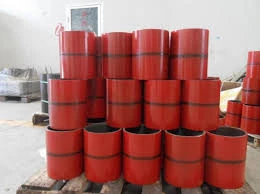- Afrikaans
- Albanian
- Amharic
- Arabic
- Armenian
- Azerbaijani
- Basque
- Belarusian
- Bengali
- Bosnian
- Bulgarian
- Catalan
- Cebuano
- Corsican
- Croatian
- Czech
- Danish
- Dutch
- English
- Esperanto
- Estonian
- Finnish
- French
- Frisian
- Galician
- Georgian
- German
- Greek
- Gujarati
- Haitian Creole
- hausa
- hawaiian
- Hebrew
- Hindi
- Miao
- Hungarian
- Icelandic
- igbo
- Indonesian
- irish
- Italian
- Japanese
- Javanese
- Kannada
- kazakh
- Khmer
- Rwandese
- Korean
- Kurdish
- Kyrgyz
- Lao
- Latin
- Latvian
- Lithuanian
- Luxembourgish
- Macedonian
- Malgashi
- Malay
- Malayalam
- Maltese
- Maori
- Marathi
- Mongolian
- Myanmar
- Nepali
- Norwegian
- Norwegian
- Occitan
- Pashto
- Persian
- Polish
- Portuguese
- Punjabi
- Romanian
- Russian
- Samoan
- Scottish Gaelic
- Serbian
- Sesotho
- Shona
- Sindhi
- Sinhala
- Slovak
- Slovenian
- Somali
- Spanish
- Sundanese
- Swahili
- Swedish
- Tagalog
- Tajik
- Tamil
- Tatar
- Telugu
- Thai
- Turkish
- Turkmen
- Ukrainian
- Urdu
- Uighur
- Uzbek
- Vietnamese
- Welsh
- Bantu
- Yiddish
- Yoruba
- Zulu
Understanding Well Tubing and Casing for Efficient Oil and Gas Production Systems
Well Tubing and Casing Essential Components of Oil and Gas Extraction
In the oil and gas industry, well tubing and casing play a critical role in the successful extraction of hydrocarbon resources from underground reservoirs. Understanding their functions, types, and importance can offer insight into the complexities of drilling operations and resource management.
What is Well Casing?
Well casing is a series of pipes installed in a borehole to provide structural integrity and isolate the well from surrounding formations. The primary purposes of casing are to prevent the well from collapsing, to isolate different geological formations, and to protect freshwater layers from contamination. The casing also serves to facilitate the installation of production tubing later in the drilling process.
Casing comes in different sizes and weights, which are chosen based on specific geological conditions and project requirements. The most common types include surface casing, intermediate casing, and production casing. Surface casing is typically installed first to support the upper part of the well and protect against contamination. Intermediate casing follows to isolate the pressure zones or protect weaker formations. Finally, production casing is set to line the portion of the well that will produce hydrocarbons.
What is Well Tubing?
Well tubing, on the other hand, refers to the smaller diameter pipes installed inside the production casing. It is designed to transport oil or gas from the reservoir to the surface. Tubing is crucial for maintaining pressure and facilitating the flow of hydrocarbons, allowing for efficient extraction.
The tubing is often constructed from corrosion-resistant materials such as steel or alloys to withstand harsh environments and minimize degradation over time. The design must accommodate various pressure requirements and flow rates, ensuring that the production process remains effective and safe.
The Relationship Between Tubing and Casing
well tubing and casing

While both tubing and casing are fundamental to a well's construction and operation, their roles are distinct yet interrelated. Casing provides the foundational structure and safety to protect the wellbore, whereas tubing is the conduit through which hydrocarbons are extracted. Hence, a well cannot be effectively operational without both components working in harmony.
Importance of Proper Installation and Maintenance
The installation of casing and tubing must be performed meticulously, as improper installation can lead to significant issues such as well blowouts, leaks, or even aquifer contamination. Quality control measures and thorough planning are essential throughout the drilling process to ensure that the casing and tubing are correctly sized, installed, and maintained.
In addition, routine inspections and maintenance of the tubing and casing are vital. Corrosion, wear, and tear are inevitable over time, especially in hostile environments typical of oil and gas extraction. Regular monitoring can help identify issues early, allowing for timely repairs or replacements to prevent operational disruptions.
Advancements in Technology
Recent advancements in technology have significantly enhanced the materials, design, and installation processes for both well tubing and casing. Innovations such as corrosion-resistant alloys, advanced sealing technology, and improved cementing practices have all contributed to safer and more efficient drilling operations.
Moreover, the use of digital technologies and data analytics in drilling operations has enabled better planning and execution. Real-time monitoring allows engineers to track performance indicators and make data-driven decisions that optimize production and minimize risks associated with casing and tubing failures.
Conclusion
In summary, well tubing and casing are indispensable components of the oil and gas extraction process. They ensure the structural integrity of the well, protect the environment, and facilitate the efficient transport of hydrocarbons to the surface. As the industry continues to evolve with technological advancements, the importance of proper casing and tubing installation and maintenance will remain paramount for the successful and responsible extraction of natural resources. By investing in proper techniques and materials, the industry can achieve not only better productivity but also a commitment to environmental stewardship and safety.
-
Tubing Pup Joints: Essential Components for Oil and Gas OperationsNewsJul.10,2025
-
Pup Joints: Essential Components for Reliable Drilling OperationsNewsJul.10,2025
-
Pipe Couplings: Connecting Your World EfficientlyNewsJul.10,2025
-
Mastering Oilfield Operations with Quality Tubing and CasingNewsJul.10,2025
-
High-Quality Casing Couplings for Every NeedNewsJul.10,2025
-
Boost Your Drilling Efficiency with Premium Crossover Tools & Seating NipplesNewsJul.10,2025







